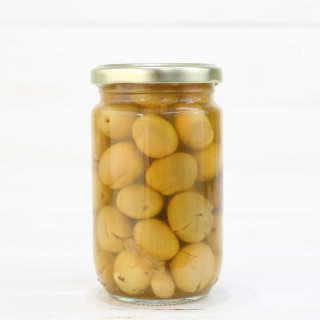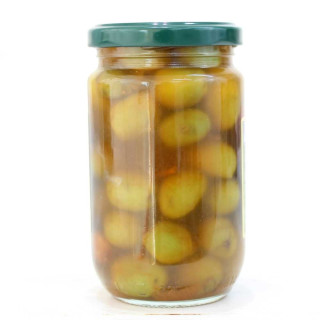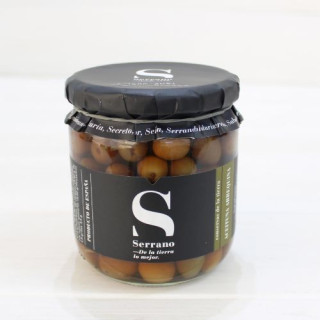Olives
In our Gourmet Olives category you can find a wide selection of olives in different dressings and fillings. They are high quality olives directly from the producer, from the olive groves of Andalusia, Spain. They are gourmet olives with homemade dressings and different fillings, to enjoy this wonderful and universal appetizer.
The flavor and texture are the great difference of this appetizer that cannot be missing in your pantry.
Table olives are ideal products to eat, savor and enjoy before and after the meal. There are several types, but no doubt without the pickles most famous there is. Remember that in AnchoasDeluxe we have jars of various weights for you to enjoy. Where are the olives in Spain Spain has several plantations of Olives. The production is one of the economic activities and agrónomas most important in the country. These numbers are only to some estimates provided by governments, which show the number of olive trees (plants where the olives grow) that are in each town: Andalusia: 174 million olive trees Extremadura: 29 million olive trees Castilla-La Mancha: 36 million olive trees Catalonia: 14 million olive trees Valencian community: 10 million olive trees Aragon: 5 million olive trees Other locations of Spain: 10 million olive trees. In addition to the olives, Spain is a large producer of olive oils, which can be done thanks to these fruits. What properties have an olive The Olive is one of the snack food more healthy. This fruit has various types of properties that I would like to enumerarte. These properties are going to magnify when prepared in the traditional way, because they retain everything that you need for the food: Contains good fats for the heart, as the monounsaturated cardioprotective and polyunsaturated, such as linoleic acid. High fiber content to relieve digestive problems Natural antioxidants, which stimulate the body, thanks to the endogenous High content of vitamin E. in Addition, they are rich in tocopherols and tocotrienols. How many olives can you eat in a day Although they are foods with low calories and with a number of benefits for the daily life, it is not recommended to eat too many because the fruit has high levels of sodium. Around 10 or 12 a day is a number pretty regular. What is the difference between the green olive and the black The clear difference between the olive green and black is the maturation. The green olives are freshly picked in the tree, and the black color indicates a point of maturation maximum. But there are other important features: 1.- For eating green olives, you need to cure the fruits, since you can't eat as well for their flavors as citrus fruits. The black eat without preserves. 2.- For cooking both serve, but it will depend on one hundred percent of the taste of each one of the people. 3.- The green olives are denser, firmer, and more bitter. The black is a little softer and with a sweet taste. 4.- There is a difference in nutritional status between clear between the two types of olives. Both are beneficial for health and have high sodium content. In either case, olives are one of our favorite products. So I recommend very much to see our entire section of pickles and olives, since sure there will be a product that is completely of your liking.




















